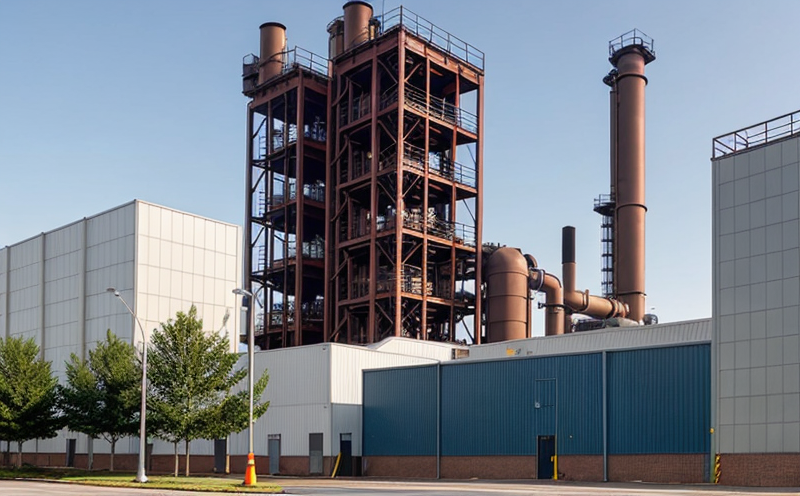EN 15085 Welding of Railway Vehicles Compliance Testing
The European Standard EN 15085 specifies requirements and test methods for the welding processes used in the manufacturing and repair of railway vehicles. This comprehensive standard ensures that welded joints meet the necessary mechanical, metallurgical, and functional properties required to ensure safety and reliability.
EN 15085 is applicable to various types of welding processes including gas metal arc welding (GMAW), submerged arc welding (SAW), friction stir welding (FSW), and others. The standard defines the qualification process for welding operators, inspection methods, acceptance criteria, and documentation requirements.
The test procedures outlined in EN 15085 are designed to ensure that welded joints meet specific mechanical properties such as tensile strength, yield strength, and elongation at different temperatures. Additionally, non-destructive testing (NDT) methods like radiography, ultrasonic testing, and magnetic particle inspection are used to assess the integrity of the weld.
The standard also includes requirements for heat treatment processes, post-weld inspections, and the documentation that must accompany each welding operation. This ensures that all aspects of the welding process are thoroughly documented and can be independently verified.
Compliance with EN 15085 is mandatory for manufacturers who produce or repair railway vehicles within the European Union. It is also often required by international rail vehicle operators, ensuring a consistent level of quality across different regions.
Test Parameters and Specimen Preparation
The testing process involves several key parameters that are critical to ensure compliance with EN 15085:
- Type of Welding Process: The specific welding method used must be specified and qualified according to the standard.
- Weld Joint Design: The design of the weld joint is crucial for ensuring that it meets the required mechanical properties. It should account for factors such as loading conditions, material type, and component geometry.
- Material Grades: The material grades used in the welding process must be suitable for railway vehicle applications and meet the specified requirements regarding chemical composition, mechanical properties, and heat treatment processes.
Instrumentation and Equipment Requirements
The testing equipment required to perform EN 15085 compliance testing includes:
- Welding Machines: The welding machine must be suitable for the specific welding process being used. It should have the necessary capabilities to produce high-quality welds that meet the standard's requirements.
- NDT Equipment: Radiographic testing machines, ultrasonic flaw detectors, and magnetic particle inspection systems are essential for assessing the integrity of the welded joint.
- Tensile Testing Machines: These are used to perform tensile strength tests on specimens cut from the welded joints. The tensile test results provide critical data regarding the mechanical properties of the weld.
Acceptance Criteria and Reporting Requirements
The acceptance criteria for EN 15085 compliance testing include:
- Tensile Strength: Tensile strength should meet or exceed the specified minimum values in accordance with the standard.
- Elongation: The elongation at break must be within the specified range to ensure that the weld joint can withstand deformation without failure.
- Visual Inspection: Any visible defects such as cracks, porosity, or lack of fusion should be avoided and removed before acceptance.
Use Cases and Application Examples
| Use Case | Description |
|---|---|
| Welding Operator Qualification: | The welding operator must be qualified according to EN 15085. This involves demonstrating proficiency in the specific welding process and passing a series of tests. |
| Weld Joint Design: | The design of the weld joint should account for factors such as loading conditions, material type, and component geometry to ensure it meets the required mechanical properties. |
| Material Grades: | The material grades used in the welding process must be suitable for railway vehicle applications and meet the specified requirements regarding chemical composition, mechanical properties, and heat treatment processes. |
| Test Results | Description |
|---|---|
| Tensile Strength: | The tensile strength should meet or exceed the specified minimum values in accordance with EN 15085. |
| Elongation: | The elongation at break must be within the specified range to ensure that the weld joint can withstand deformation without failure. |
Competitive Advantage and Market Impact
- Ensures Quality: Compliance with EN 15085 ensures that welded joints meet the necessary mechanical, metallurgical, and functional properties required for safety and reliability.
- Achieves Regulatory Requirements: Manufacturers who comply with this standard can ensure they are meeting regulatory requirements in the European Union.
- Broad Market Acceptance: Compliance with EN 15085 is often a requirement by international rail vehicle operators, ensuring a consistent level of quality across different regions.





